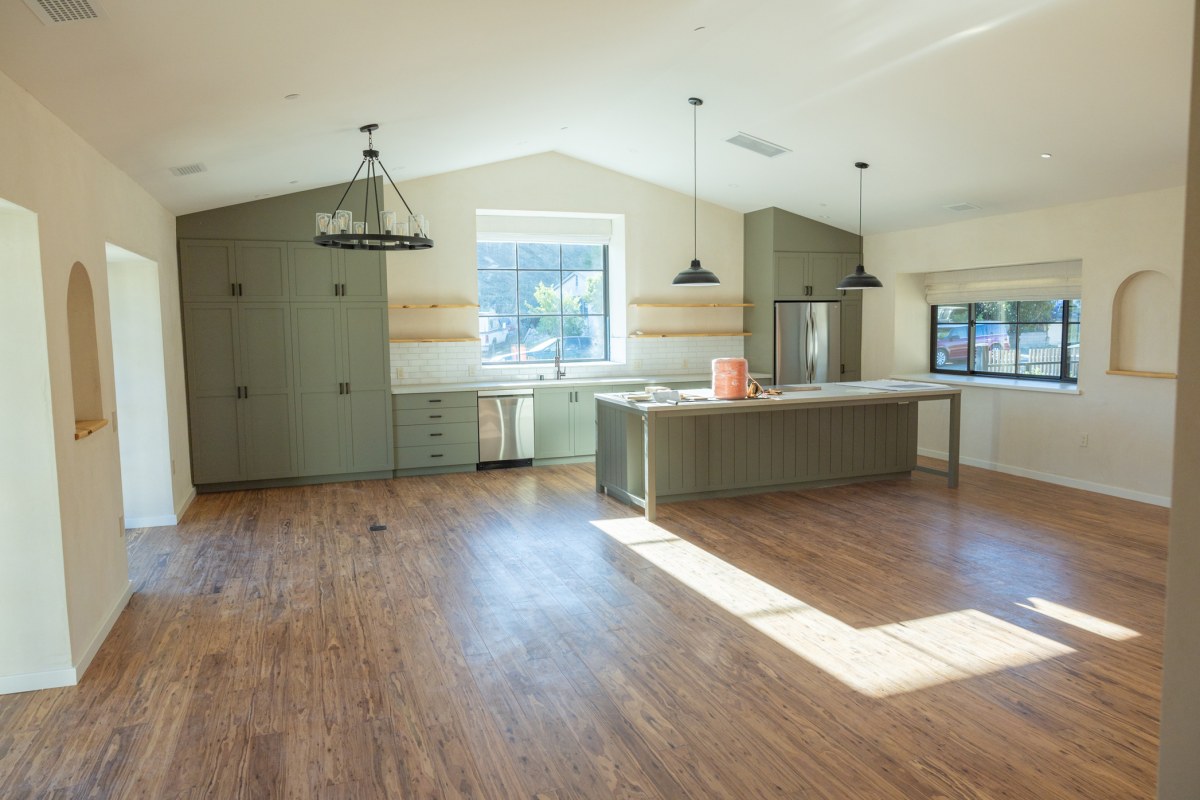 Architect Dylan Johnson with his longtime friend and Patagonia founder Yvon Chouinard designed and built a straw bale home in the suburbs of Ventura, California.
Architect Dylan Johnson with his longtime friend and Patagonia founder Yvon Chouinard designed and built a straw bale home in the suburbs of Ventura, California.
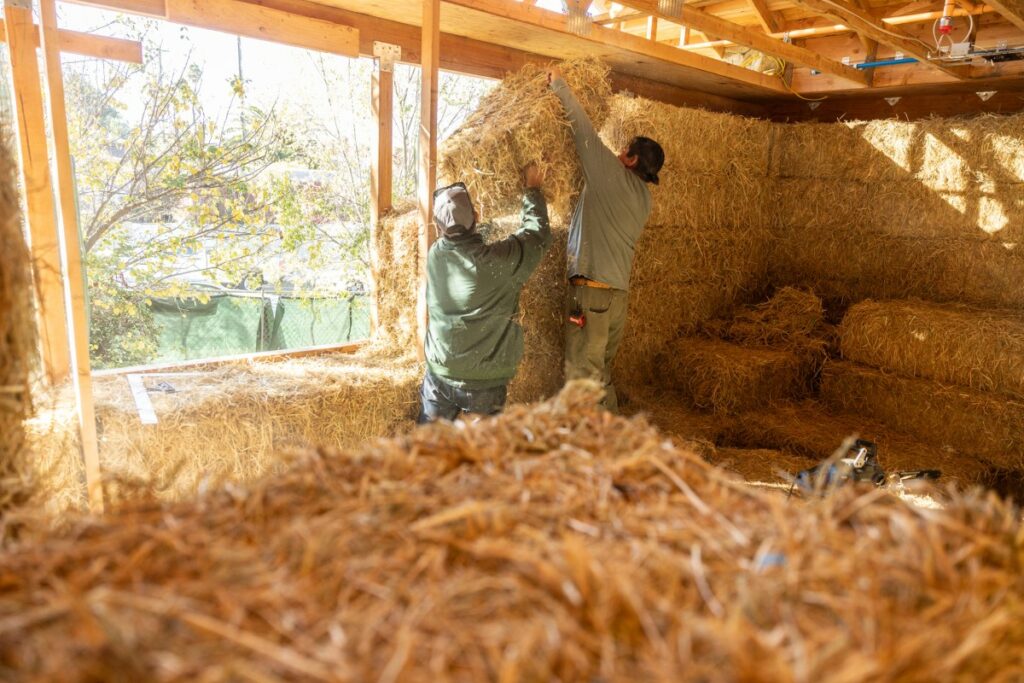 The straw is leftover from wheat, rice, or barley crops as the main structural element or insulation in a building. “There’s an enormous amount of money to be made with waste. The time is now to reimagine, not just housing, but everything else.” Chouinard says he’s been a fan of straw bale for 50 years and was excited by the opportunity to show people that a big piece of saving the planet is honoring our connection to nature.
The straw is leftover from wheat, rice, or barley crops as the main structural element or insulation in a building. “There’s an enormous amount of money to be made with waste. The time is now to reimagine, not just housing, but everything else.” Chouinard says he’s been a fan of straw bale for 50 years and was excited by the opportunity to show people that a big piece of saving the planet is honoring our connection to nature.
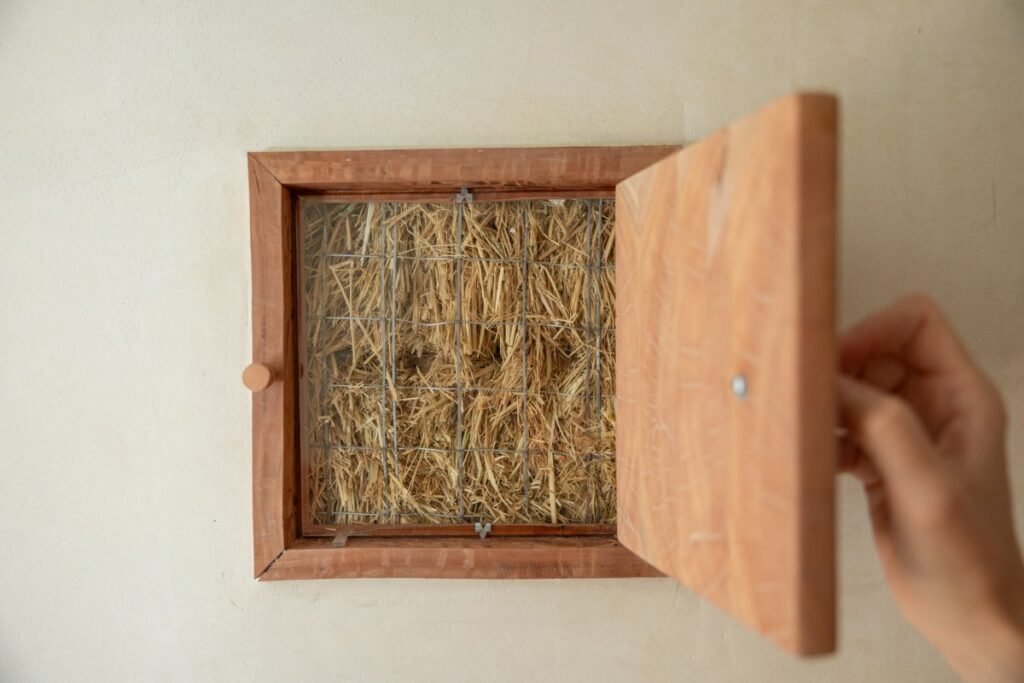 With only five percent of the domestic straw production, you could have enough bales for one million 2,000-square-foot homes. The project Johnson and Chouinard completed spanned three years (as permitting took a while) and cost roughly the same as it would have had it been built conventionally.
With only five percent of the domestic straw production, you could have enough bales for one million 2,000-square-foot homes. The project Johnson and Chouinard completed spanned three years (as permitting took a while) and cost roughly the same as it would have had it been built conventionally.
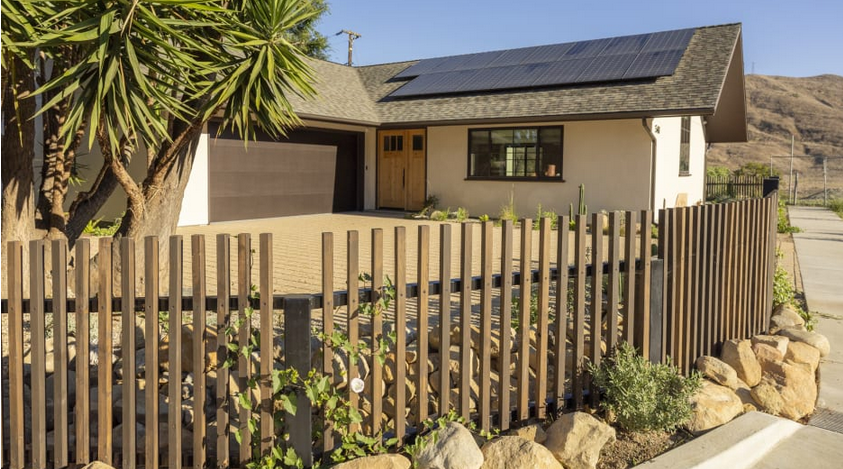 From the outside, this project looks no different from the other houses on the block. It was framed with wood, but insulated with two-foot-deep straw bale walls. Yet, unlike its conventional counterpart, the straw bale house costs far less to heat or cool and offers at least three times the insulation power.
From the outside, this project looks no different from the other houses on the block. It was framed with wood, but insulated with two-foot-deep straw bale walls. Yet, unlike its conventional counterpart, the straw bale house costs far less to heat or cool and offers at least three times the insulation power.
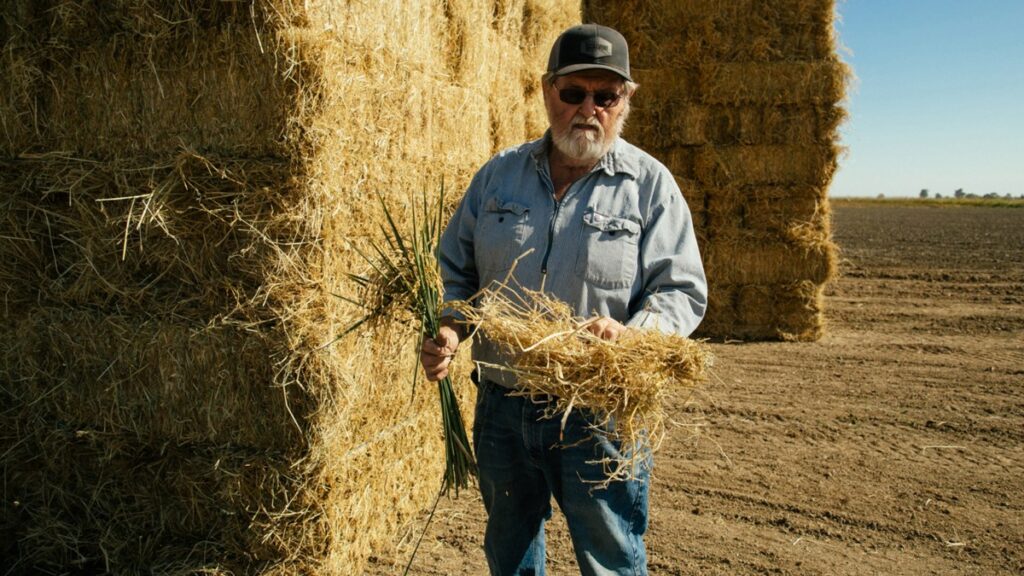 “Bale walls can replace (or at least reduce) a number of the conventional stick- framed building systems, including the stick-framing, the insulation, the exterior plywood, and the building wraps and siding. On the interior face of the wall, because the bales are encased in a finish plaster, the builders have no need for sheetrock, paint or other interior finishes. Straw is plentiful and local, driving very low raw material costs and embodied energy. In the construction industry, a 500-mile radius is considered ‘local’, and there are very few parts of the United States that are more than five hundred miles from a straw-producing farm,” says Johnson.
“Bale walls can replace (or at least reduce) a number of the conventional stick- framed building systems, including the stick-framing, the insulation, the exterior plywood, and the building wraps and siding. On the interior face of the wall, because the bales are encased in a finish plaster, the builders have no need for sheetrock, paint or other interior finishes. Straw is plentiful and local, driving very low raw material costs and embodied energy. In the construction industry, a 500-mile radius is considered ‘local’, and there are very few parts of the United States that are more than five hundred miles from a straw-producing farm,” says Johnson.
You can watch a video about this project at www.youtube.com
You can read the original article at www.fastcompany.com

